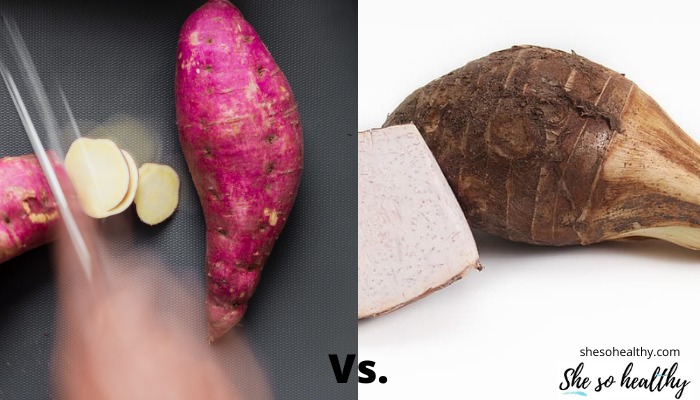There’s much confusion over yams and sweet potatoes. If you’re confused, don’t worry, you’re not alone. Even grocery stores label them incorrectly. Here, we break down the differences, explain why there is so much confusion over yam and sweet potato, reveal the nutrition content in both, and give you cooking tips for yam.
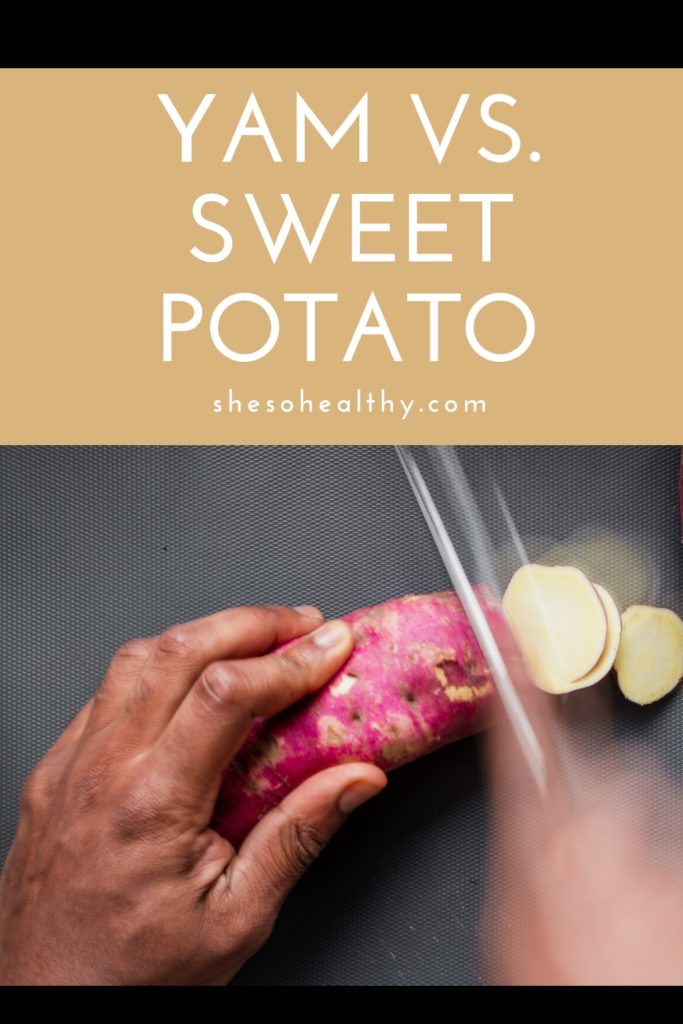
So are yams sweet potatoes?
Most definitely not. While they are both tubers, which means they are vegetables that grow underground on the root of a plant and they are high in starch, these two tubers are quite different and not related botanically.
Yam
Yams are starchier than sweet potatoes. The skin on yams is thicker and they are not very sweet, in fact, they have a milder taste. The skin is normally dark brown or light pink and resembles bark. The flesh is white, purple, yellow, or pink. Yams are cylindrical in shape and can grow to be 5 feet long – the heaviest was recorded at 130 pounds in 1999. You could feed a whole town with that one yam. Most of the world’s yam supply is grown in West Africa.
Sweet potato
Sweet potatoes have thinner skin and come in a variety of colors: purple skin and flesh, red skin and white flesh, pale tan skin and white flesh, and finally, rose color skin and orange flesh. They are generally cylindrical with a tapered end.
Sweet potatoes also have a sweeter, more distinct taste.
Here’s the difference.
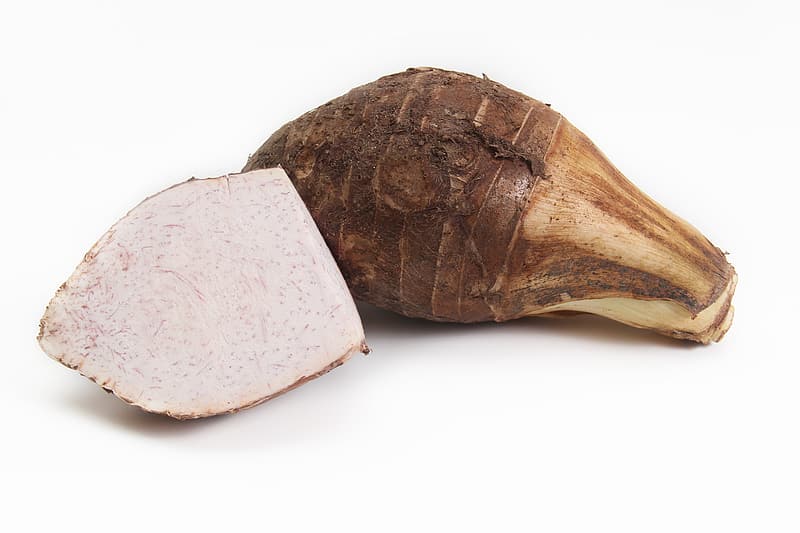
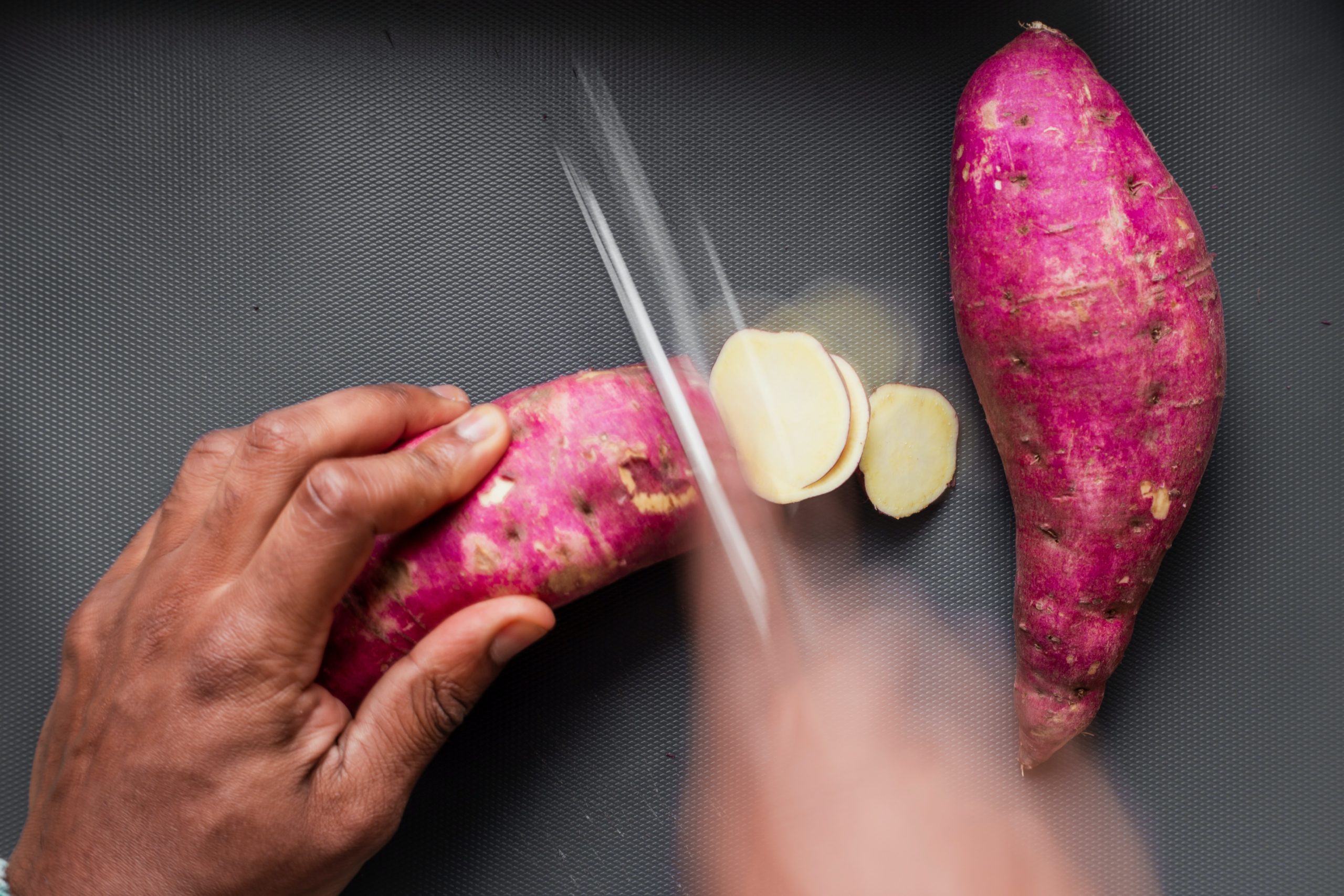
What caused the confusion?
So if yams are not sweet potatoes, why are the sweet potatoes in the grocery store sometimes labeled as yams and why do people use the two terms interchangeably? There’s an interesting reason for this.
In the United States, the firm variety of sweet potatoes was grown before the soft. When the soft variety was introduced, they had to differentiate them. Africans who were brought to America as slaves started calling the soft variety ‘yam’ because they look like the yams back in Africa, and made it easier to distinguish them from the firm variety. This caught on and so the soft variety of sweet potatoes became known as ‘yams’. Funny how names stick.
Did you know there are 625 plant species in the yam (Dioscorea) family?
Nutrition content of yams and sweet potatoes
| Nutrition | Yams (1 cup) | Sweet Potatoes (1 cup) |
| Calories | 158 | 180 |
| Carbs | 37.4g | 41.4g |
| Protein | 2g | 4g |
| Fiber | 5.3g | 6.6g |
| Vitamin C | 27% daily value | 36% daily value |
| Vitamin B6 | 16% daily value | 29% daily value |
| Thamin | 9% daily value | 14% daily value |
| Vitamin A | 3% daily value | 368% daily value |
| Niacin | 4% daily value | 15% daily value |
| Pantothenic acid | 4% daily value | 18% daily value |
| Manganese | 25% daily value | 50% daily value |
| Potassium | 26% daily value | 27% daily value |
| Magnesium | 6% daily value | 14% daily value |
| Copper | 10% daily value | 16% daily value |
Percent Daily Values (%DV) are for adults or children aged 4 or older, and are based on a 2,000 calorie reference diet. Your daily values may be higher or lower based on your individual needs.
Health benefits of yam and sweet potato
Both yams and sweet potatoes are highly nutritious as you can see in the table above. Below you can find out more about a few of these vitamins and minerals.
Vitamin A
For a healthy dose of vitamin A, sweet potatoes are the go-to food. Like carrots, sweet potatoes don’t disappoint when it comes to beta-carotene, the antioxidant that gives them their orange color. Beta-carotene is one type of provitamin A which means it’s a precursor to vitamin A and turns into vitamin A in your small intestine. It’s found in fruits, vegetables, and other plant-based foods. The other type of vitamin A is the fully-formed kind. It’s found in meat, poultry, fish, and dairy products.
Vitamin A is an antioxidant, and a fat-soluble vitamin which means that the body can store it for a period of time and is an essential vitamin. Vitamin A is great for your eyes, particularly night vision. Research also shows that your immune system relies on vitamin A too. Vitamin A is not normally associated with bone health but there is research to show that it does play in keeping bones healthy.
Vitamin C
Yam and sweet potato are also a great source of vitamin C. Another antioxidant, vitamin C is water-soluble which means you need it daily as it’s not stored in the body. Vitamin C is needed by the body to synthesize collagen which is needed for connective tissue health, including skin, muscles and ligaments.
Being an antioxidant, vitamin C reduces the effects of free radicals and so in turn, may help to prevent or delay certain cancers and other chronic diseases. Vitamin C also plays an important role in the absorption of non-heme iron. Non-heme iron is found in plant-based foods.
Vitamin B6
Both yams and sweet potatoes are quite high in Vitamin B6 or Pyridoxine – another water-soluble vitamin that is not stored by the body and is essential. Vitamin B6 plays a role in a number of body functions. It helps in the creation of neurotransmitters and is important for mental health, so it may help to improve mood and reduce feelings of depression and anxiety. Similarly, it may help to reduce pre-menstrual symptoms of irritability and anxiety. B6 may also help increase your energy levels as it helps with the production of hemoglobin which is a protein that delivers oxygen to your cells. Low oxygen levels lead to low energy levels. There is also research showing that vitamin B6 may help pregnant women with morning sickness and symptoms of nausea.
Manganese
Sweet potatoes will provide you with a very healthy dose of manganese as will yams, a mineral that is essential and has antioxidant properties. It plays a role in the metabolism of sugar as well and works in conjunction with other vitamins and minerals to improve bone health, reduce the risk of strokes, reduce inflammation, and reduce premenstrual symptoms.
Potassium
You probably thought bananas were the go-to plant-based food for a healthy dose of potassium but yams and sweet potatoes have similar levels of potassium. This mineral is also an electrolyte so it counteracts the effects of sodium to maintain healthy blood pressure levels. It may help in reducing the risk of cardiovascular disease and it’s needed for bone and muscle health.
Did you know that some species of non-edible yams have medicinal properties? They contain chemical compounds known as steroidal saponins, one of which, called diosgenin has been modified to make progesterone. And progesterone was used to create the first contraceptive pill. There you go, yams and contraception. Who would have thought!
kew.org
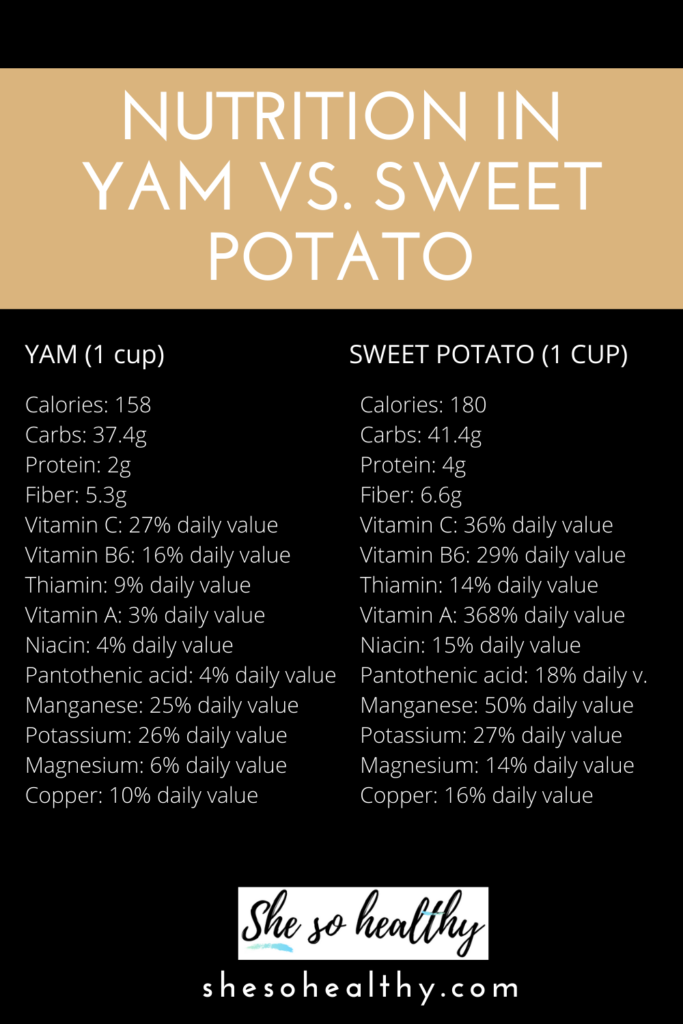
How to cook yam
To prepare yams for cooking, you may want to wear gloves, as the flesh is sticky. The skin is quite thick so shaving it off with a knife works best. Cut it as required, you can treat it as you would a potato.
To cook the yam, you can either boil, steam or roast it. The air fryer would work well too.
You’ll need to season yam as it has a neutral taste, which makes it great for sweet or savory recipes. Yam takes less time to cook than a potato. Certain types of yam are only safe to eat when cooked to be sure to cook yam every time.

